SAVE MOTHER EARTH
PALMOIL – Biofuel, Climate Change, Food, etc.
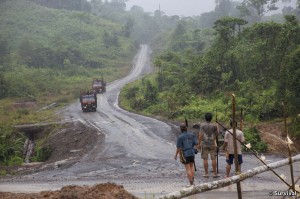
> Penan armed with blowpipes block road as logging trucks owned by the Shin Yang company approach. <
> Rainforest Information Center <
> SURVIVAL INTERNATIONAL -PALM OIL <
> THE ECOLOGIST – PALM OIL, SUSTAINABLE PALMOIL ? <
> 9th Session UN Permanent Forum on Indigenous Issues <
> Indigenous Peoples Issues/Resources – Palm Oil <
Palm oil is an edible plant oil derived from the pulp of the fruit of the oil palm Elaeis guineensis. It should not be confused with palm kernel oil, which is derived from the kernel (seed) of Elaeis guineensis, or with coconut oil, which is derived from the kernel of the coconut palm (Cocos nucifera). Palm oil is naturally reddish because it contains a high amount of beta-carotene (though boiling palm oil destroys the beta-carotene, rendering the oil colourless. Read More: > HERE <
Deforestation occurs for many reasons: trees or derived charcoal are used as, or sold, for fuel or as a commodity, while cleared land is used as pasture for livestock, plantations of commodities, and settlements. The removal of trees without sufficient reforestation has resulted in damage to habitat, biodiversity loss and aridity. It has adverse impacts on biosequestration of atmospheric carbon dioxide. Deforested regions typically incur significant adverse soil erosion and frequently degrade into wasteland.
Disregard or ignorance of intrinsic value, lack of ascribed value, lax forest management and deficient environmental law are some of the factors that allow deforestation to occur on a large scale. In many countries, deforestation is an ongoing issue that is causing extinction, changes to climatic conditions, desertification, and displacement of indigenous people.Read More: > HERE <
Biofuels threaten lands of 60 million tribal people – Demand for biofuels is destroying tribal peoples’ land and lives, according to indigenous representatives at the United Nations Permanent Forum on Indigenous Issues (UNPFII), meeting currently in New York.
A report presented to the UNPFII refers to ‘increasing human rights violations, displacements and conflicts due to expropriation of ancestral lands and forests for biofuel plantations.’ One of the report’s authors, UNPFII chairperson Victoria Tauli-Corpuz, has said that if biofuels expansion continues as planned, 60 million indigenous people worldwide are threatened with losing their land and livelihoods.
Palm oil is one of the most destructive crops used for biofuels. Millions of indigenous people in Malaysia have already been affected by palm oil plantations, and millions more in Indonesia, where over 6 million hectares of oil palm have been planted, mostly on indigenous territory. In Colombia, thousands of families, many of them indigenous, have been violently evicted from their land because of palm oil plantations and other crops.
Malaysia, Indonesia and Colombia all plan to expand their palm oil plantations. Indonesia has announced plans for plantations in Borneo, projected to displace up to 5 million indigenous people, and 5 million hectares, much of it indigenous land, has been set aside for palm oil in Papua. Colombia is planning 6.3 million hectares of plantations, which could affect more than 100 indigenous communities.
‘If the government take our land, what will we have left?’ an indigenous Papuan leader said in an interview with Survival. ‘If there is a plantation, our land will be destroyed.’
Other crops for biofuels include sugar cane, soy, corn, manioc and jatropha, a plant native to Central America. The > Guarani < in Brazil have lost much of their land to sugar cane cultivation, while the government in India is targeting 13.5 million hectares of what it calls ‘wasteland’, much of which is actually indigenous land.
Survival’s director, Stephen Corry, said today, ‘The biofuels boom doesn’t just have consequences for the environment, global food prices or orang-utans – it’s having a devastating effect on tribal people too. The companies feverishly promoting this industry have been perfectly willing to push aside tribal people in their hunger for land.’
The Amazon Rainforest is the world’s greatest natural resource – the most powerful and bio-actively diverse natural phenomenon on the planet. Yet still it is being destroyed just like other rainforests around the world. The problem and the solution to rainforest destruction are both economic. Rainforests are being destroyed worldwide for the profits they yield – mostly harvesting unsustainable resources like timber, for cattle and agriculture, and for subsistence cropping by rainforest inhabitants. However, if land owners, governments and those living in the rainforest today were given a viable economic reason NOT to destroy the rainforest, it could and would be saved. Thankfully, this viable economic alternative does exist. Many organizations have demonstrated that if the medicinal plants, fruits, nuts, oils and other resources like rubber, chocolate and chicle, were harvested sustainably – rainforest land has much more economic value than if timber were harvested or if it were burned down for cattle or farming operations. Sustainable harvesting of these types of resources provides this value today as well more long term income and profits year after year for generations to come.
The Amazon Rainforest has long been a symbol of mystery and power, a sacred link between humans and nature. It is also the richest biological incubator on the planet. It supports millions of plant, animal and insect species – a virtual library of chemical invention. In these archives, drugs like quinine, muscle relaxants, steroids and cancer drugs are found. More importantly, are the new drugs still awaiting discovery – drugs for AIDS, cancer, diabetes, arthritis and Alzheimer’s.
Many secrets and untold treasures await discovery with the medicinal plants used by shamans, healers and the indigenous people of the Rainforest Tribes. So alluring are the mysteries of indigenous medical knowledge that over 100 pharmaceutical companies and even the US government are currently funding projects studying the indigenous plant knowledge and the specific plants used by native shamans and healers.
Long regarded as hocus-pocus by science, indigenous people’s empirical plant knowledge is now thought by many to be the Amazon’s new gold. This untold wealth of the indigenous plants are the true wealth of the rainforest – not the trees. Rich in beneficial nutrients, phytochemicals and active constituents, the rainforest Indians and Indigenous People have used them for centuries for their survival, health and well-being. Yet extracting these secrets from the jungles is no easy task and sadly, this state of affairs may not last long enough into the future for man to unlock all their secrets. Tragically, rainforests once covered 14% of the earth’s land surface; now they cover a mere 6%.
In less than 50 years, more than half of the world’s tropical rainforests have fallen victim to fire and the chain saw and the rate of destruction is still accelerating. Unbelievably, over 200,000 acres of rainforest are burned every day in the world. That is over 150 acres lost every minute of every day. Experts estimate that at the current rate of destruction, the last remaining rainforests could be consumed in less than 40 years. Experts also estimate that we are losing 130 species of plants, animals and insects every single day as they become extinct from the loss of rainforest land and habitats. How many possible cures to devastating diseases have we already lost? > FULL ARTICLE , PLANT DATA BASE, RAINFOREST SUPPORT <
Biodiversity, Heinrich Böll Stiftung – In conclusion, it appears increasingly clear that there are some forms of new energy investment, (both fossil-fuel and so-called “renewable”) that are particularly damaging to the local environment and communities and to our climate. For these reasons, they should be considered too high risk to pursue – especially in developing countries with very weak political and environmental governance. Eni’s plans to develop tar sands and oil palm in Congo fall into this category.
- Download full version of Study > „Energy Futures ? < Eni´s investment in> tar sands (extra heavy oil) < and palm oil in the Congo Basin“ (PDF, 4 MByte, 41 Pages).
- INTERVIEW – Keine Entwarnung: Bedrohung für Gletscher im Himalaya ist real > HERE < & ( IPCC) The Intergovernmental Panel on Climate Change Report.
- BÖLL – GOING GREEN – THE FUTURE HAS BEGUN NOW<
Heinrich Theodor Böll (December 21, 1917 – July 16, 1985) was one of Germany’s foremost post-World War II writers. Böll was awarded the Georg Büchner Prize in 1967 and the Nobel Prize for Literature in 1972. Read More: > HERE <

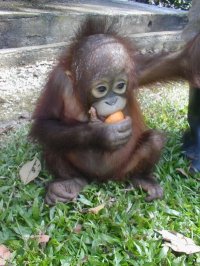
The demand for palm oil is forecast to double by 2020. To achieve that production increase, 1,160 new square miles will have to be planted every year for 20 years. Indonesia has 26,300 square miles more forest land officially allocated for new oil palm plantations; Malaysia has almost 3,000 square miles more. The expected thousands of square miles of new plantings on the islands of Sumatra and Borneo could kill off the remaining orangutans, rhinos, and tigers.
- Important: Please look at the following links to learn more about Palm Oil and the effect on the Orangutans: An article on the effects of Palm Oil: http://www.guardian.co.uk/environment/2007/apr/04/energy.indonesia
- All interesting Links: : > SAVE THE ORANG UTAN / facebook <
- Some Facts from … > DONT PALM US OFF < :
- Palm oil is found about 40 percent of the food products on our shelves and its rampant cultivation is destroying the Orangutan’s habitat at an alarming rate.
- The United Nations has warned that Orangutans could be extinct within a generation if we don’t act quickly.
- Once palm oil is labelled, consumers can actually drive a market for proper certified sustainable palm oil because they can demand it of manufacturers.
- Watch the Don’t Palm Us Off campaign video and send this page link to your friends!
- Palm Oil in Chocolate, Greenpeace Canada <
- SAVE MOTHER EARTH, SAVE GANGA <
- PALM OIL BLOG AND VIDEOS <
- Economic Benefits ? <
- Saving Rainforest with medical plants <
- Heinrich Böll Stiftung – Tar Sands and Palm Oil in Congo <
- Meet Dont Palm us off , friends fans, at fb <
- Meet Indigenous Peoples Issues and Resources, friends, fans at fb <
- Meet Survival International friends, fans at fb <
- Meet Global Concern, studies, friends, fans at fb <
- Meet The Ecologist, studies, friends, fans at fb <
- Meet Nobel´s Women Initiative, friends, fans at fb <
- Meet ALL PALM OIL GROUPS, Friends, (APOC) Palm Oil Comm.<
Monasteries Environmental Himalayaprotection
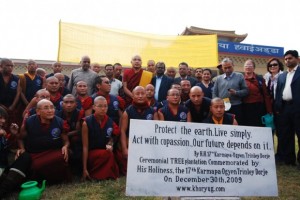
> MYSTIC TRAILS – Clean up Project <
KHORYUG is a network of Buddhist monasteries and centers in the Himalayas working together on environmental protection of the Himalayan region with the aim of practically applying the values of compassion and interdependence towards the Earth and all living beings that dwell here. As Buddhist practitioners, we believe that our actions must flow from our aspiration to benefit all sentient beings and safeguard our mother Earth and that this positive change in our societies must begin with ourselves first.
KHORYUG aims to develop a partnership with community based organizations and NGOs wherever there is a member monastery or center so that together with our communities, we can help and protect all life on Earth now and for the future. Subscribe to get updates on the progress of KHORYUG, and to learn more about how you can help.
KHORYUG IN ACTION! – On the afternoon of Christmas Day, over 150 members of Khoryug met at the front of the gates of Tergar Monastery to clean up the surrounding area, including the roads, ditches, wetlands and lake nearby. Participating in the clean up were monks and nuns of all the Khoryug monasteries as well as visitors from far away who are in Bodh Gaya for the 27th Kagyu Monlam.
The activity was used as an opportunity by Khoryug coordinators to explain the important of minimizing one’s own footprint due to the immense long term impact of non-organic waste such as plastics.
SOLAR PROJECT – This is to bring to your kind notice that Environment Conservation Committee, Rumtek Monastery is going to convey Tashi Delek to all the Dharma Centre and all the Monasteries on the auspicious occasions of Tibetan New Year (Losar) which is on coming 14th. Here, our Environment Committee has already started the home made solar water heating system project to save the energy and reduce the utilization of electricity power and other energies. It has been completed two solar water heating system out of five. Under guidance of one Dharma friend, helping from Sangha Jinpa Gyatso and Environment staff Mr Yeshi, helper Laxman. Our people are expertise in making the solar water heating system by themselves. Currently, our Sanghas are using the hot water for bathing and washing. And also it wills soon utilizing in our main kitchen for cooking, making tea and washing dishes or utensils.
The Real Avatar: Story of a Sacred Mountain
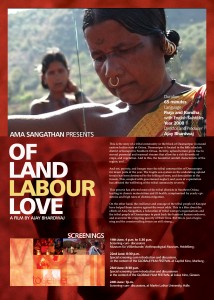
> ESTC Ecotourism 2010 Conference <
> Indogenous Peoples Ressources <
> TRIBAL ENERGY ECONOMIC CONFERENCE <
The Kondha are indigenous tribal groups of India. Unlike other tribal groups of India, the Dongria Kondh are accomplished horticulturists, farming on the mountain ranges of Niyamgiri. Their highest concentration is found in the blocks of Rayagada, Kashipur, Kalyansinghpur, Bissamcuttack and Muniguda.
One sub-group of kondhas is the Dongria Kondhas. They inhabit the plateaus of Niyamgiri hill ranges which cover parts of Rayagada and Koraput and Kalahandi districts. Their major concentration is found in the blocks of Kalyansinghpur, Bissamcuttack and Muniguda. They are called Dongria or dweller of donger („hill“ in Oriya) and love to settle in higher altitudes due to their economic demands. The Niyamgiri Hills where the Dongria Kondh dwell are covered by superb natural forests and home to many rare species like the Golden Gecko and the Giant Squirrel. The Dongria Kondh call themselves Jharnia meaning those who live by the Jharana (streams). Hundreds of perennial streams flow from Niyamgiri hill, and there are hundreds of Dongria villages by the streams. The Dongria are the protectors of these streams, hills and jungles and are revered by people in the nearby plains. Read More > HERE <
Die Globalisierung dringt heute gewalttätig und rücksichtslos bis in die letzten Gebiete vor, die noch nicht direkt von Staat, Wirtschaft und Kapital kontrolliert werden. Diese Gebiete sind meist Regionen, in denen verschiedene indigene Gemeinschaften leben, beispielsweise in Indien, Brasilien, Botswana, Ecuador oder in Venezuela. Für einige dieser Adivasi-Gemeinschaften (indigene Gemeinschaften) hat sich der gewaltsame Einzug „der Zivilisation“ in ihr Leben erst vor kurzem vollzogen. Die traditionelle Lebensweise vieler Adivasis wurde auf unterschiedliche Weise untergraben, zum Teil bereits von den Kräften des Marktes, Kapitals und des Staates zerstört.
Eine dieser zahlreichen bedrohten Adivasiregionen der Welt ist Kashipur im Bundesstaat Orissa in Indien. In dieser Region leben die drei Adivasi-Gemeinschaften Kondha, Jhodia-Paraja und Pengo. Aufgrund der Industrialisierung wurden hier bereits in einem Radius von 100km große Waldgebiete zerstört, um die nahegelegenen Städte und die Industrie mit Nutzholz zu beliefern. Dies ging einher mit dem Bau von Bahngleisen und Straßen und bedeutete das Eindringen „zivilisierter“ Außenseiter in die Region, die Ansiedlung staatlicher Institutionen, einschließlich der Polizei, Bürokratie, der Händler und Geldverleiher. Mehr lesen. > HIER <
The Dongria and other local Kondh people are resisting „Vedanta“ and are determined to save Niyamgiri from becoming an industrial wasteland. Other Kondh groups are already suffering due to a bauxite refinery, built and operated by „Vedanta“, at the base of the Niyamgiri Hills. Villagers who have been removed from their homes for the refinery have suffered threats and intimidation. They have lost both their land and their means of supporting themselves.
They are also suffering from health problems due to pollution from the refinery, which they blame for skin problems, livestock diseases and crop damage.
> Tribal survival: the Dongria Kondh < > MINING IN ORISSA utubechannel <
The Niyamgiri Hills are home to the more than 8,000 Dongria Kondh, whose lifestyle and religion have helped nurture the area’s dense forests and unusually rich wildlife.
The Dongria farm the hill slopes, grow crops in among the forest, and gather wild fruit, flowers and leaves for sale.
They call themselves Jharnia, meaning ‘protector of streams’, because they protect their sacred mountain and the life-giving rivers that rise within its thick forests.
The „Vedanta’s“ open pit mine would destroy the forests, disrupt the rivers and spell the end for the Dongria Kondh as a distinct people.
At the centre of the struggle is the Dongria’s sacred mountain, the ‘mountain of law’. The Dongrias worship the top of the mountain as the seat of their god and protect the forests there.
The „Vedanta“ Resources wants to mine the bauxite from the top of the same mountain. The Dongria Kondh would lose their livelihood, their identity and the sanctity of their most religious site.
About First Peoples – In January 2009, the Andrew W. Mellon Foundation awarded four university presses a collaborative grant that established an innovative partnership. The grant supports the publication of 40 books over four years and will create the means for the presses to collaborate in their mission of furthering scholarly communication in the field of Indigenous studies. Our publishing initiative seeks the best and most robust scholarship by junior authors whose publications will contribute to the development of the field.
Vision – In January 2009, the Andrew W. Mellon Foundation awarded four university presses a collaborative grant that established an innovative partnership. The grant supports the publication of 40 books over four years and will create the means for the presses to collaborate in their mission of furthering scholarly communication in the field of Indigenous studies. Our publishing initiative seeks the best and most robust scholarship by junior authors whose publications will contribute to the development of the field. Learn More
Press Expertise – The partner presses on this initiative bring together expertise in regional, national, and global Indigenous issues, creating a publishing program that reaches beyond traditional geographically bound or even discipline-bound borders. Learn More
Author Benefits – The collaborating presses seek works by authors that reflect the expanding field of Indigenous studies. Authors who are selected to participate in our program will receive many benefits, thanks to funding from the grant.
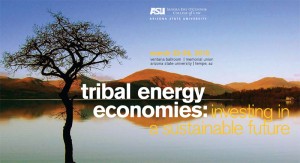
www.firstpeoplesnewdirections.org
Tribal Energy Economies: Investing in a Sustainable Future – CLE CONFERENCE – Domestic energy production is undergoing a major evolution as we explore and expand traditional and new energy sources. Tribes are well-positioned to lead our nation into this next generation of development.
This conference will bring together elected and community leaders from Indian country, financing and energy industry experts, attorneys, and those in academia to chart a course that will allow tribes to increase their leverage now and create sustainable energy economies for the future. We will look at strategic plans to promote investment and to prepare the tribes for a transition towards truly sustainable economies.
We will address the traditional energies: coal, natural gas, oil, and segue to alternative and renewable energies and beyond. This conference will be a true exchange of ideas by experts in traditional, renewable, and alternative energies, as well as engineers, economists, attorneys, and financial and legislative specialists. It will look at the challenges of developing long-term economies in these energies, including the economic and cultural issues associated with large-scale build-outs on tribal lands.
The mission of the conference is to inspire the attendees not only to envision the future for the tribe’s energy economies but to also identify a clear path to success and bring together people who can contribute to achieve that success.
- University of Arizona Press
- University of Minnesota Press
- University of North Carolina Press
- Oregon State University Press
- The Andrew W. Mellon Foundation
MIND & LIFE: COMPASSION IN ECONOMY

> ALTRUISM & COMPASSION IN ECONOMIC SYSTEMS <
April 9–11, 2010, Kongresshaus, Zurich Switzerland
The Mind and Life Institute is dedicated to fostering dialogue and research at the highest possible level between modern science and the great living contemplative traditions, especially Buddhism. It builds on a deep commitment to the power and value of both of these ways of advancing knowledge and their potential to alleviate suffering.
The ongoing global financial crisis shows clearly just how vulnerable economic systems are to human behavior, particularly to corruption and greed. This strongly suggests that other qualities, such as empathy, pro-social motivation, altruism and compassion may play an essential role in our increasingly competitive global economic system.
But can we really imagine an economic system that delivers prosperity and welfare, or is competition an unavoidable consequence of the human race? How can we, as individuals, help form a society that is both productive and resolves actual societal and environmental problems? What have the sciences to contribute – if anything at all?
By bringing together some of the world’s leading minds, the Mind and Life XX Conference highlights the benefits and limitations of altruism and compassion in economic systems. This offers a unique opportunity to follow a high-level, interdisciplinary exchange of scientists and economists focusing both on individual thinking and the structure of economic systems.
Thus, the conference will build bridges between different disciplines and serve as a catalyst for new research projects and economic initiatives promoting personal responsibility, fairness and compassion.
Mind and Life XIV – Dialogues on „The Universe in a Single Atom“
The Dalai Lama’s book The Universe in a Single Atom: the Convergence of Science and Spirituality highlights those issues he feels are most important in the „convergence of science and spirituality.“ These issues form the focus of this webcast of the Mind and Life XIV meeting, and become the foundation on which a group of scientists develop a deep dialogue with the Dalai Lama and other Buddhist scholar-practitioners. > VIEW HERE <
> Meet Mind and Life, Friends, Studies at facebook <
> Meet Vedic Friends, Studies, Groups at facebook <